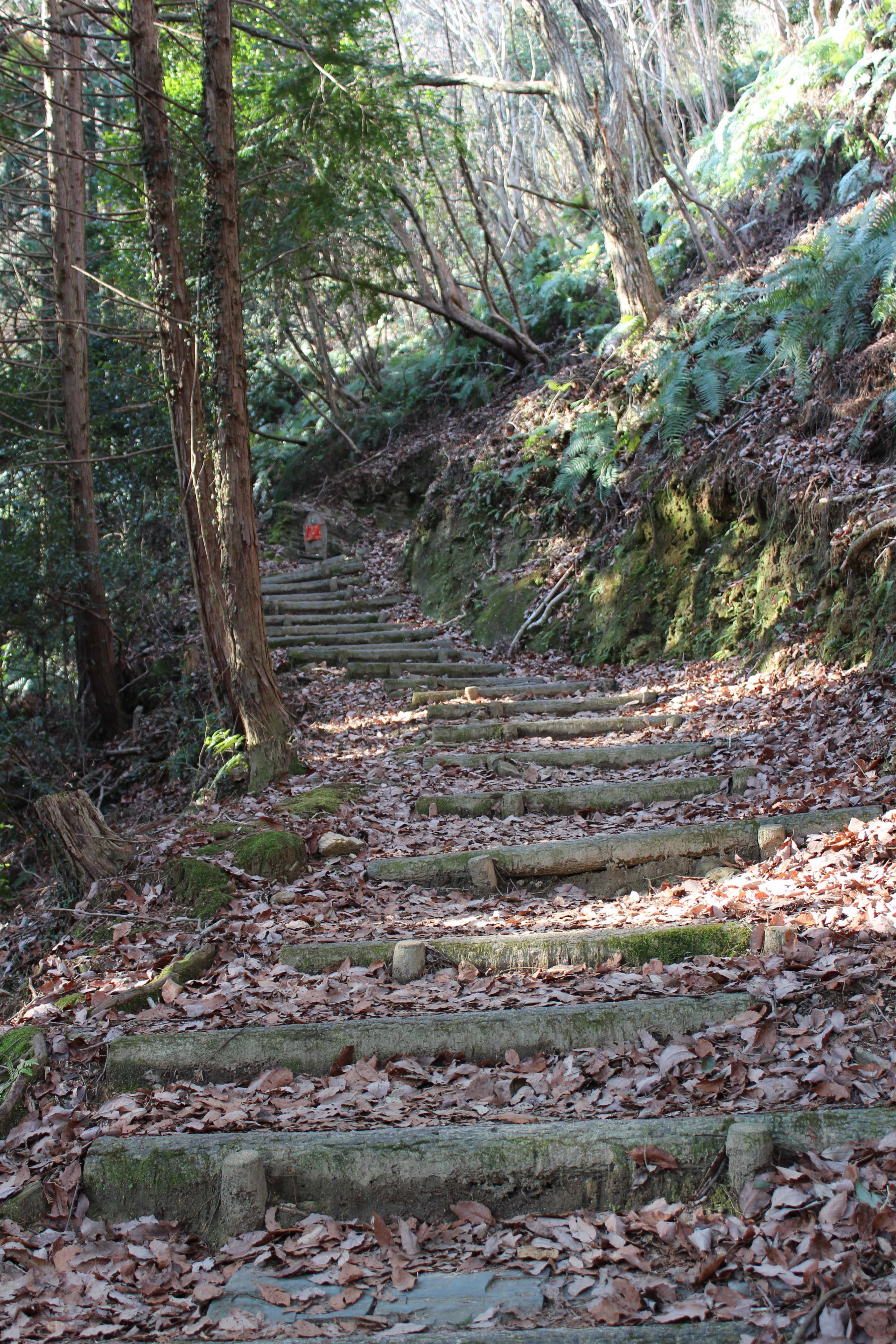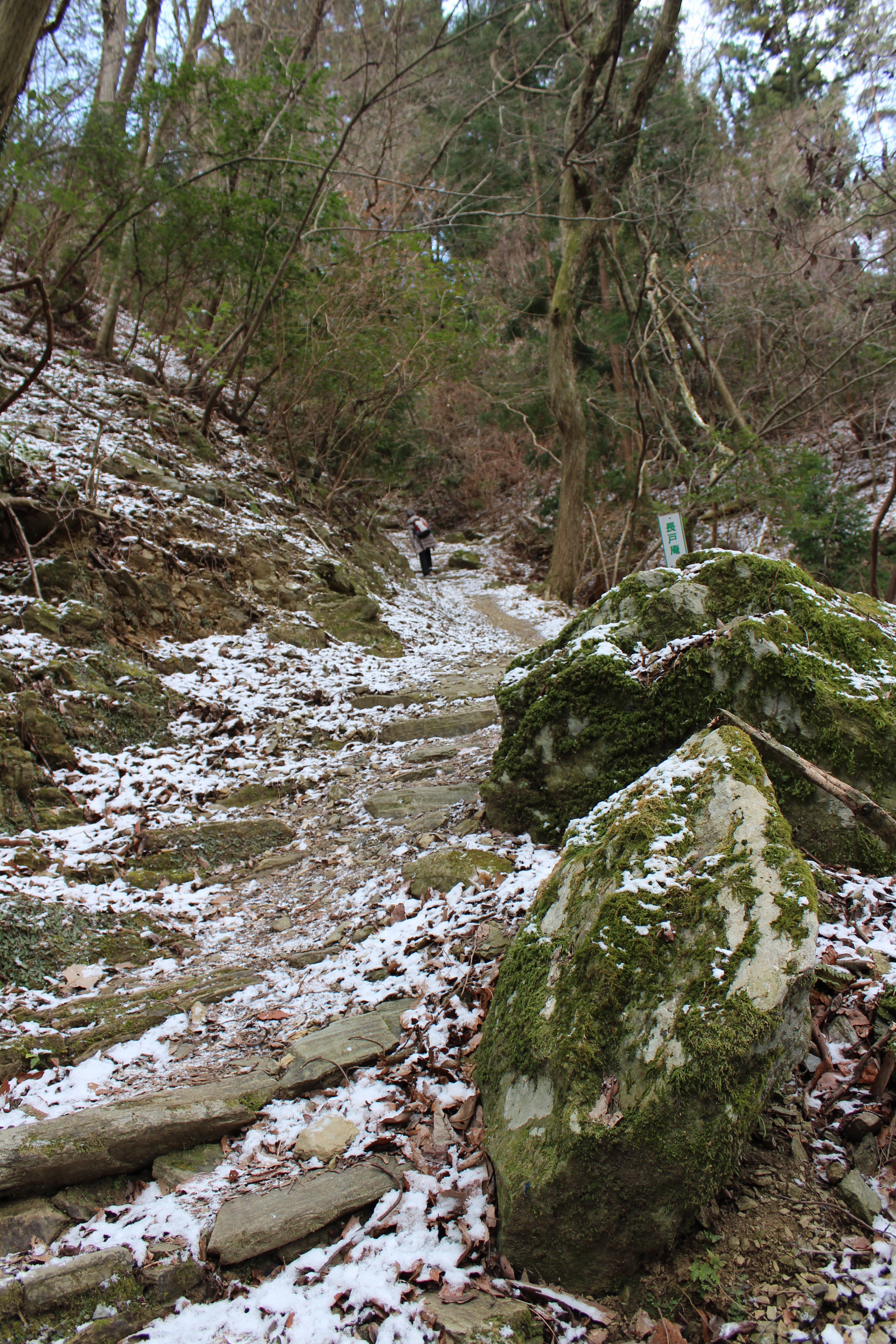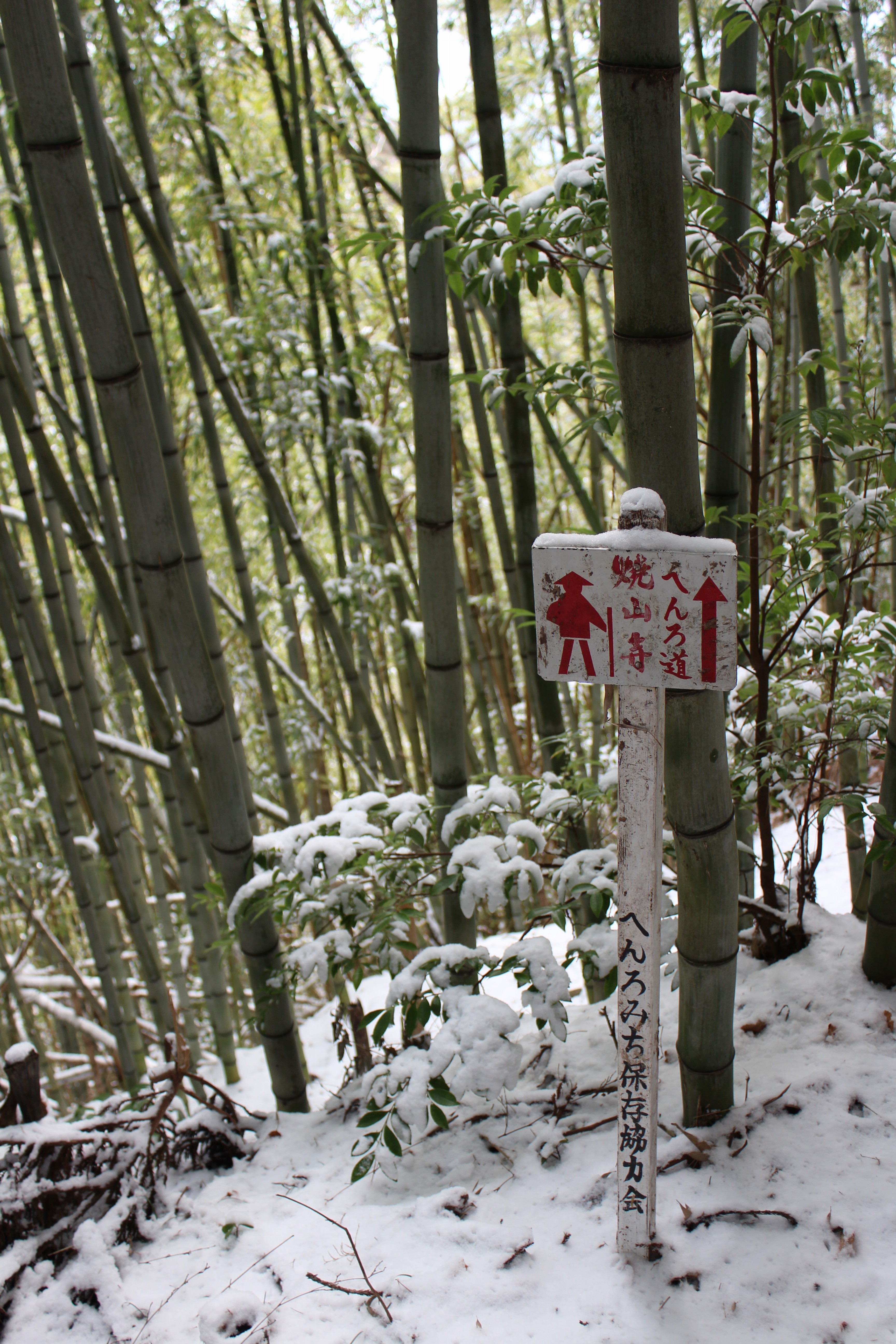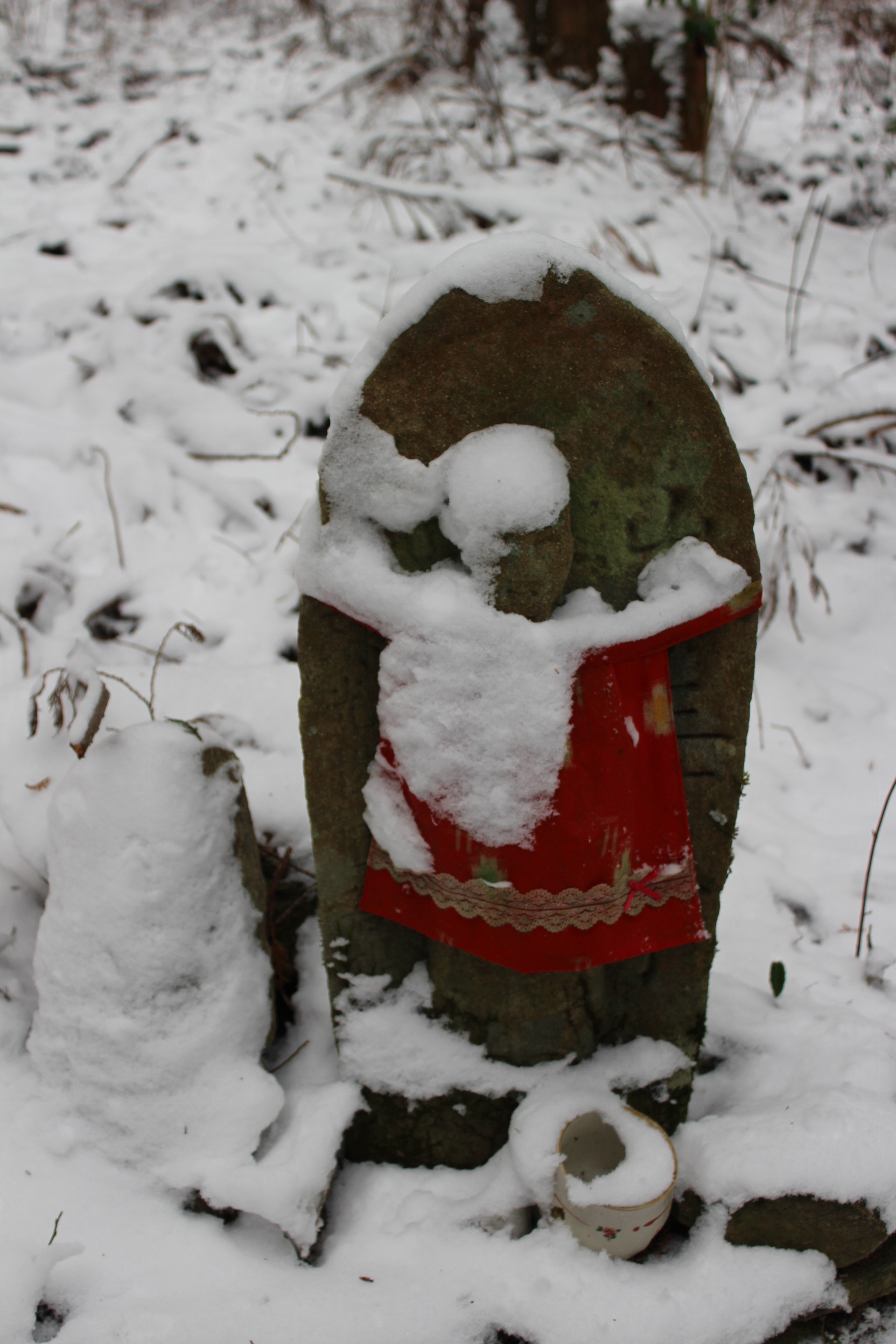Hiking up to Shōsanji, temple 12
Shōsanji was the first real mountain temple (7000 feet) on the pilgrimage. When Kōbō Daishi founded a training place for his teachings on this mountain, there was a legend that told of a large snake living there. He fought off the snake. The name Shōsanji originates from this legend (Shōsan means “burning mountain.” The snake burnt the mountain, but was subdued and shut in the cave by Kōbō Daishi with the help of Ākāśa-garbha (Space-womb, Limitless Light/Love) Bodhisattva, et al. Kōbō Daishi carved this Bodhisattva’s statue and enshrined it into the newly built temple, named Shōsanji, Burning Mountain Temple).
This mountain path is the first real challenge for pilgrims and therefore it is called Henro-korogashi, which means “henro tumbler” (“tumbler,” okiagari-koboshi, rising small Dharma-teacher, ” is a doll with Bodhidharma face in sitting posture with the weight at the bottom, which always sit up whenever pushed down, epitomizing the nana-korobi ya-oki, seven falling eight rising, always rising up whenever falling, the determined aspiration of the ohenro, pilgrim, practitioner to attain the awakening in unconditioned peace, nirvana. Ohenro, pilgrim, has already in the way to follow the Awakened Way in nirvana, unconditioned peace. Aspiration is attainment, egoless enlightenment: eternal essence.)
This day was the last day I walked with my Japanese friend Yuko. After reaching Shōsanji, she and her husband Shigeo went back to Tokyo. The good thing was that I did not have to carry my heavy backpack up the mountain; Shigeo brought it to the Nabeiwa-sō, a mountain resort of a Sumitomo company, in which I stayed overnight.
It was a crisp and beautiful morning when we started our several hours hike of 13 km up the mountain. I was sure that Kōbō Daishi was with us.
Start of the hiking trail at Fujiidera (temple 11) to Shōsanji (temple 12). The statue of Kōbō Daishi, with red bibs on his feet, is watching over each pilgrim that begins to walk the path.
Incense holder in front of the Daishi Hall, a place where Kōbō Daishi is venerated
Already in the beginning of the trail the path consisted of stairs.
View into the valley with Awa City and Yoshino River in the background
With the elevation, more and more snow covered the path.
The beauty of the winter landscape was stunning.
The red path markers were even more visible in contrast with the green bamboo forest and the snow-covered grounds.
Despite the freezing cold weather, camellias were still blooming.
.
All along the way, one can find little statues of Jizos, which are guardians of the Henro. Some Jizos were so old that their bodies were hardly recognizable anymore.
Statue of the Buddha in Pari-nirvana close to the entrance of Shōsanji
It was in the middle of the afternoon when we reached the temple grounds. There was a steep stairway up to the entrance gate. Before reaching the gate, ancient cedar trees and red lanterns were lined up along the path with a statue of Kōbō Daishi on the left hand side.
I stayed overnight at Nabeiwa-sō, a mountain resort. The house seemed to be made out of paper. It was freezing cold!












